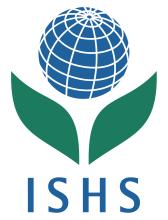Resource information
Growing processing tomatoes represents one of the most intensive forms of land use in terms of water consumption and nutrient inputs. During the last decade in many European countries and in the United States, Integrated Crop Management guidelines have also been applied for fertilisation and reducing nitrogen inputs to crops has become compulsory. A large number of Best Management Practices, rules and tools have been developed to steer farmers toward sustainable farming practices. High-input crops, of which the processing tomato is one of the most important, now have to face new worldwide emergencies: water shortages and desertification. Moreover, consumers demand certified food quality and safety, nutraceutic foods and environmentally friendly production. Market and policies have changed. In this new context both farmers and industries must focus on a rational use of natural resources: preserving water and soil fertility will be part of a product’s new quality labels. ICM strategies must be applied and improved if these goals are to be reached. ICM improvement requires, above all, profound changes in technical/social/economic perspectives: Water and nutrient inputs must be no longer reasoned in terms of quantity but in terms of their efficiency in achieving a precise target (e.g. °Brix Water or Nitrogen Use Efficiency as °Brix kg ha-1 mm-1 or kg-1N). Nutrient supplies (amount and timing) must be based on the crop energy/biomass conversion ratio, not on the predicted yield. Physical and physiological-based DSS, rather than simplified approaches (tables, checkbook methods, etc.), must be incorporated into ICM. Extensive learning and Information Technology diffusion programs must be activated. Environmental laws reduce crop profitability: society must accept the responsibility of rewarding farmers for their role in safeguarding clean water, fresh air and bio-diversity. An integrated Production Chain approach is needed to correctly manage water and soil resources Non-conventional water and nutrient sources (brackish and reused water, compost) should be taken into account. The amount of water needed to produce 1 ton of peeled tomatoes decreases by 14.7 % if ICM rules are applied at a farm level only and by 19.3% if water use is optimised throughout the production chain. Applying improved ICM strategies which enhance water and nutrient efficiency could bring estimated water savings of about 25%.



